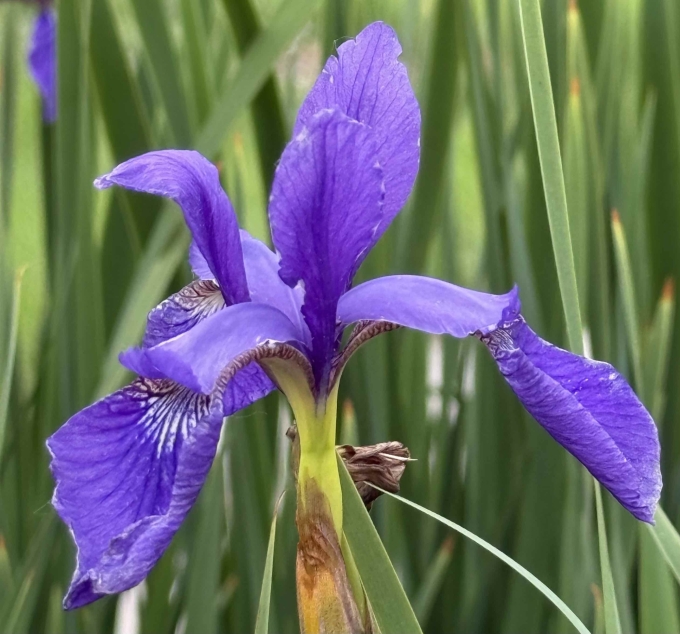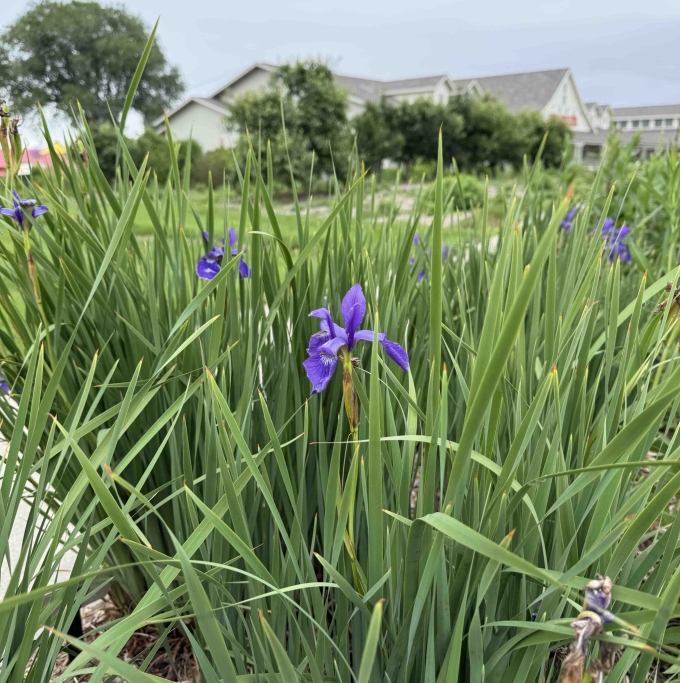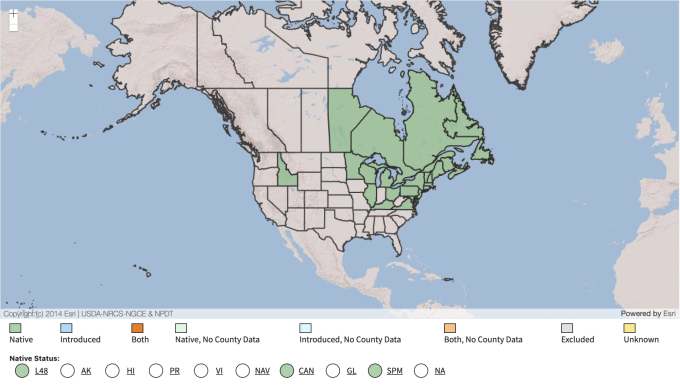Common Name: Blue Flag Iris
Family: Iridaceae
Plant Type: Herbaceous Perennial
Native Range: Northeastern and central North America; found in wet meadows, marshes, and along streams, native to parts of Nebraska
Hardiness Zones: 3–9
Height: 2.0 to 3.0 feet
Spread: 2.0 to 3.0 feet
Bloom Time: Late spring to early summer (May–June in Nebraska)
Bloom Description: Large, showy, violet-blue flowers with yellow and white markings at the base of the petals
Sun Exposure: Full sun to part shade
Water Needs: High (prefers consistently moist to wet soil)
Soil Preference: Moist, rich soils; tolerates clay and thrives in wet areas
Maintenance Level: Low to medium
Suggested Use: Rain gardens, pond edges, wetland restorations, native plantings
Attracts: Bees, butterflies, and other pollinators
Tolerates: Periodic flooding, heavy clay soils, deer
Notable Features: Striking flowers, tolerance of wet conditions, excellent for erosion control in wet areas
Nebraska Growing Notes:
Blue Flag Iris is a beautiful native iris that thrives in wet soils and full to partial sun, making it an excellent choice for rain gardens and pond edges in Nebraska.
It performs well in eastern Nebraska and other areas where soils remain moist or periodically flooded. In drier areas, it will require supplemental watering unless planted in a naturally wet location.
Its bold, sword-like leaves provide texture even when the plant is not in bloom, and the striking flowers attract pollinators and admirers alike.
Landscape Use:
Ideal for wetland edges, rain gardens, native plantings, erosion control along streams and ponds, or any area with consistently moist soil. Pairs beautifully with Carex (sedges), Juncus (rushes), and other moisture-loving natives.
Caution:
Non-toxic to wildlife but mildly toxic to humans and pets if ingested. Can spread by rhizomes to form colonies, desirable in naturalized plantings but may need to be thinned in smaller gardens.
Garden Locations:
Sources:
https://plants.usda.gov/plant-profile/IRVE2



